How far human knowledge extends
When I say that one really must have had a great imagination to describe the so-called prehistoric Beglik Tash sanctuary with all its appurtenances, this is what I mean:
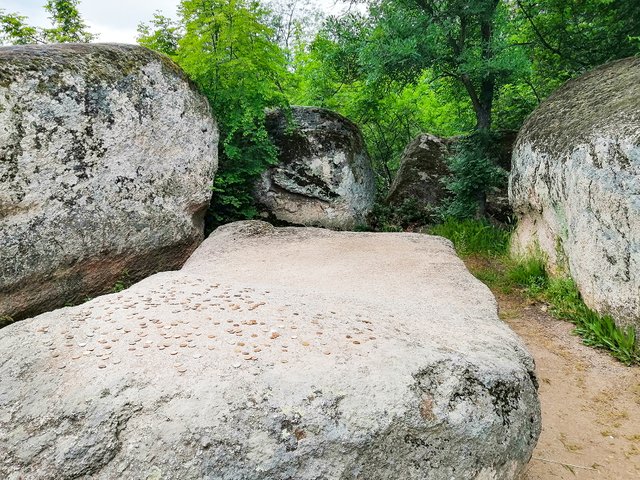
This stone is described as a marriage bed where the priest and priestess visualized the sacred marriage between the Sun God and the Mother Goddess.
Not that I'm ruling out the possibility that such rituals once took place, after all some organizations are said to still practice them, but just like that on a rock?
I really can't figure out where today's scientists stand on the ancients - were they, in their opinion, advanced in every way, or were they just barbarians performing fanciful and wacky rituals?
On the one hand, according to them, they were able to move and arrange pieces of rock, some weighing about 100 tons, on the other hand, they were lying on some stones.
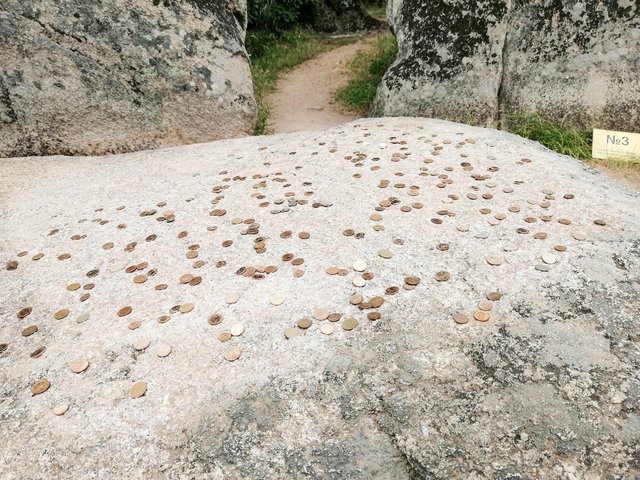
(Nowadays, people who visit the sanctuary leave coins right here. Why? For conception and fertility perhaps.)
But let's move on to make my point more clearly.
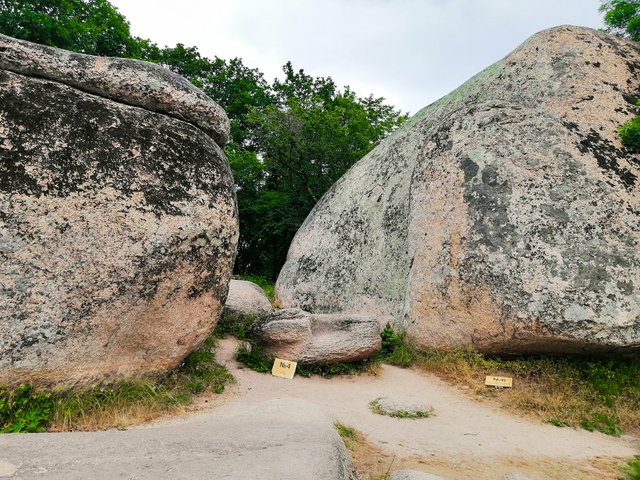
The Priest King's throne (center) next to something called a menhir (to the right), though it doesn't quite look like one. In any case, calling it a menhir, one thing is certain, this large and wide stone is considered to have been placed in its place by human hands. Several centuries before Christ at that. And notice, unlike other such places in the country, the theory of aliens having done this is not even hinted at here. In fact, no one has even talked about exactly how these stones were placed. On the other hand, a lot of work has gone into the description of these objects, as well as a description of their purpose.
It was as if someone had actually been there, teleported back all those centuries to witness the sacred ceremonies that were said to take place here.
But agree that men as capable of moving such large pieces of rock as of carving sacrificial holes in the stone are also capable of fashioning from stone some more beautiful, more imposing, and much better made stone throne, which befitting a priest indeed.
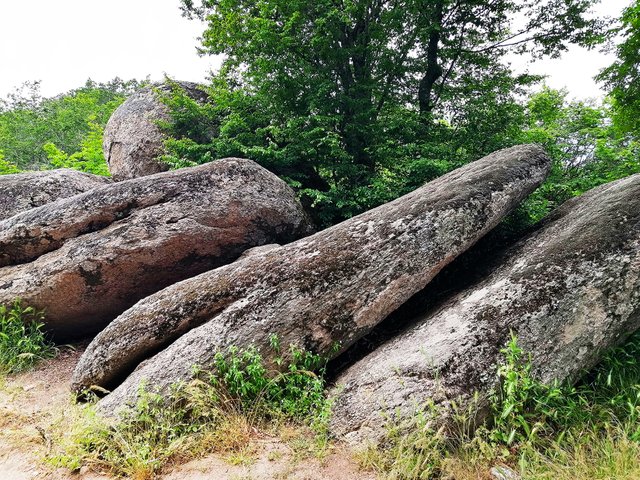
Part of the so-called sundial, several "arrows" fell by earthquake in this way. Otherwise, it is claimed, these were once 16 slabs arranged in a circle. Of course, no one has ever seen them like this. Also, why 16, has anyone asked this question and researched such a system of measuring or telling time in ancient times?
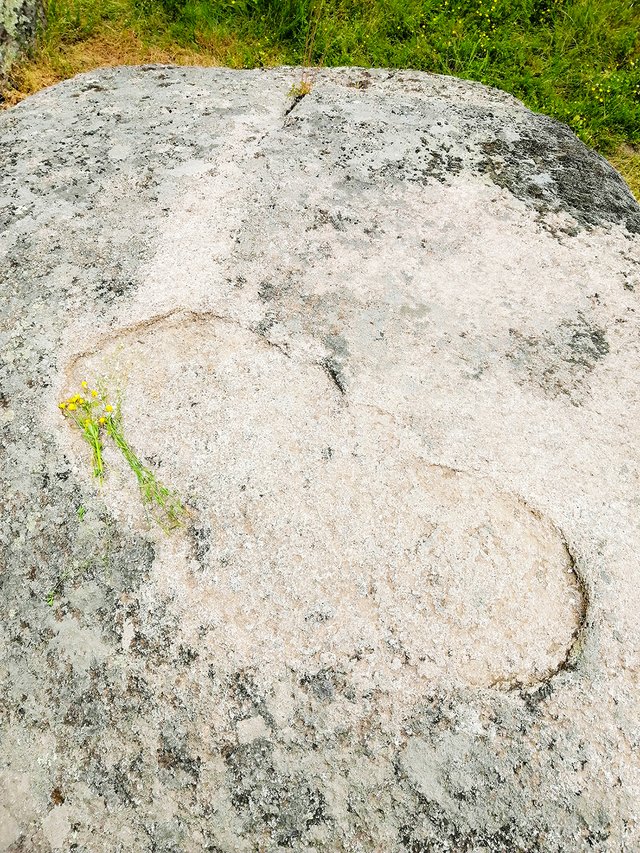
A stone with a footprint of the Mother Goddess. Indeed, here they amaze me even more, the scientists of course, not the ancients. Because archaeologists claim that the steps were hand-carved into the rocks at this place. But in my opinion, it could be anything but a footprint. As I said, these were very capable "people", surely they could depict a step in the stone in a much more realistic and good way.
And what amuses me the most is the following:
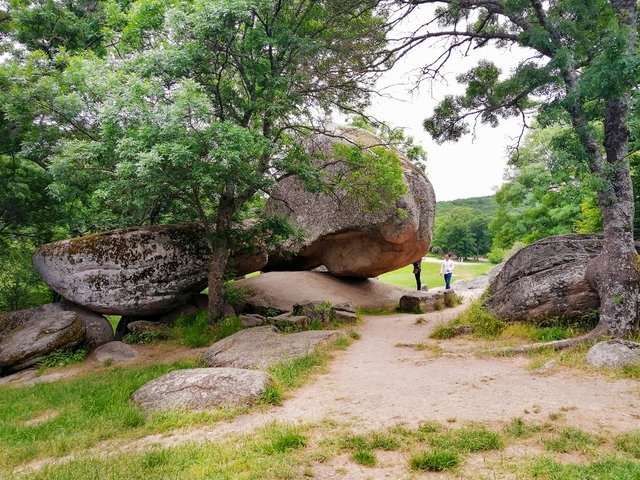
Apostle Tash - this is the name given to this huge inverted stone by its first and earliest discoverer probably at the beginning of the last century. The funny thing here is the use of the word apostle when talking about a prehistoric sanctuary. And also the name of this apostle - Tash, as the place Beglik Tash itself was named, because it is a Turkish word that means stone.
Apostle Stone must mean this. And no explanation is given for it. Perhaps the wit used to name it was enough. But not for me.
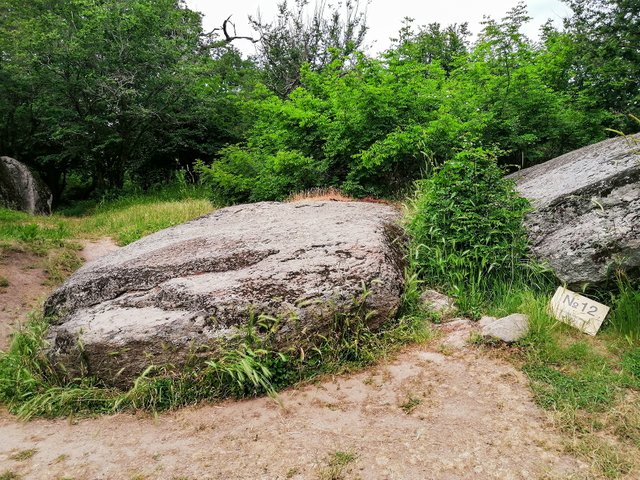
Do you understand what I mean? Some place has been discovered. No one can explain it. On the other hand, the objects in it are described and named, a story is invented. As if that was all that mattered. A flyer has been made, the doors are open and people are coming in droves.
"Oh, this is the step of the Mother of God." "Oh, this is their marriage bed." Oh..., wtf?
That's as far as human knowledge goes. And no one wants or seeks anything more than that?
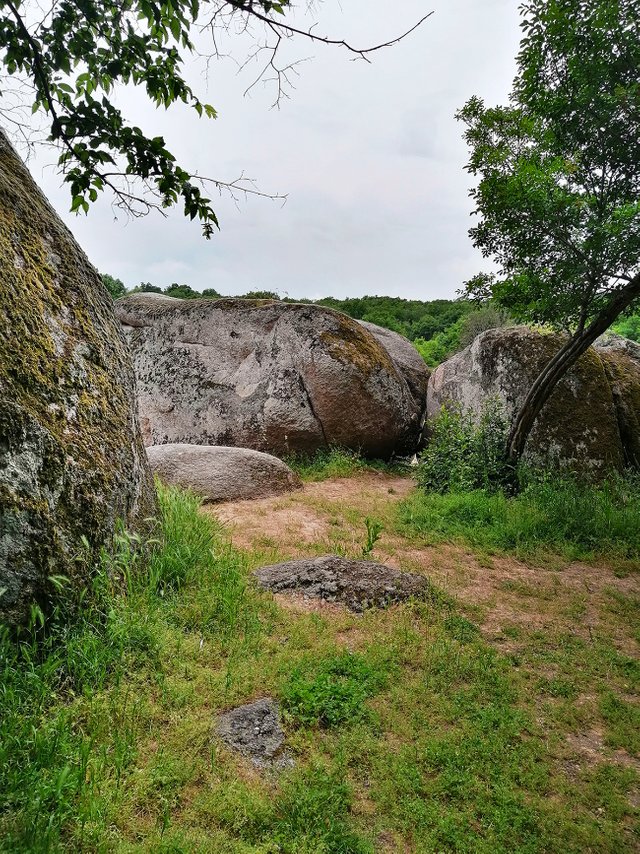
| Thank you for your time! Copyright: | @soulsdetour |
|---|---|
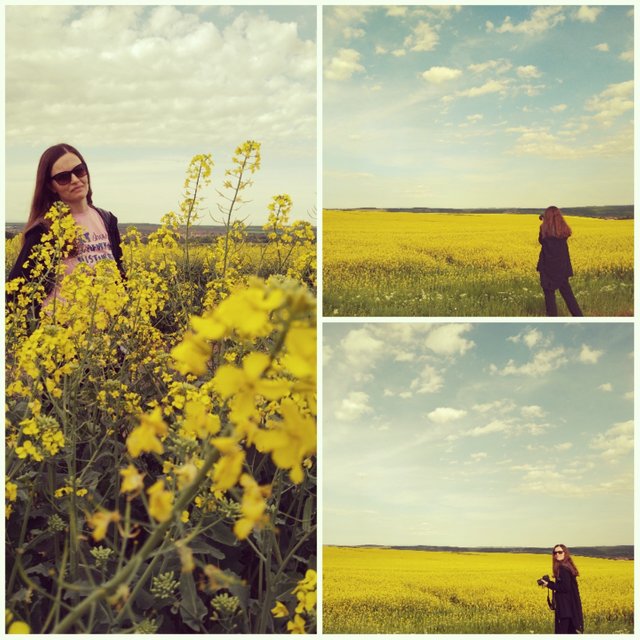 | Soul's Detour is a project started by me years ago when I had a blog about historical and not so popular tourist destinations in Eastern Belgium, West Germany and Luxembourg. Nowadays, this blog no longer exists, but I'm still here - passionate about architecture, art and mysteries and eager to share my discoveries and point of view with you. |
Personally, I am a sensitive soul with a strong sense of justice.
Traveling and photography are my greatest passions.
Sounds trivial to you?
No, it's not trivial. Because I still love to travel to not so famous destinations.🗺️
Of course, the current situation does not allow me to do this, but I still find a way to satisfy my hunger for knowledge, new places, beauty and art.
Sometimes you can find the most amazing things even in the backyard of your house.😊🧐🧭|
This article made me question every historic place I have ever visited in my life. 😛
One of which is Eagle's Nest in the Karakoram mountain range. It's a place on a mountain peak where there are big rocks carved in eagle shape. Locals say they are not carved by humans. It's the work of eagles or some unknown power. Eagles used to lay their eggs on those rocks but since the place became accessible to humans, they abandoned it.
I can't understand why 16 slabs were needed for a sundial. Isn't that what you said?
Yes, it is written that there were once 16 stone slabs arranged in a circle that served as a sundial 🤷♀️
What you are talking about is an impressive place, indeed. I searched the internet for more pictures of these rocks, but didn't find much to look at in more detail.
I would trust the locals. Sometimes legends are passed down between them from generation to generation, and often these legends are simply a mythologized reality, difficult to perceive as such by modern man.
Actually, did they say that the gods formed these rocks? Or were they worried about saying such things in front of strangers? 🤭
Btw, regarding the illiteracy and poverty of the population, I was looking for statistical data for Bulgaria, so as not to say things that are not supported by facts. But of course, I didn't find much concrete stuff. For example, just one article from last year says that every third person in the country has a university degree, and every tenth person has incomplete primary education. No conclusions can be drawn from this, however, because most people who drop out of the education system are actually Roma who simply have no desire to learn.
Then, on the website of the statistical institute, it is said that 20% of the population lives below the poverty line, which is already low. A large proportion of people above this threshold simply survive anyway, as I already wrote. I'd even say everyone else. Because I calculated that for 2021 1.16% of the population lived really well, these are people with the highest (registered) incomes. Another 1.56% also lived "humanly", by my reckoning. That makes a total lol 😃 not even 3% of the entire population.
Well, this was actually useful for me to see for myself how things were (not) developed here...
There's not much on the Internet. What did you search by the way? If you type 'Eagle's Nest Hunza Viewpoint' then you'd be able to see some images. But the text is mostly about the attractions in the area, not their history.
I was very inquisitive about those rocks and asked multiple shopkeepers below in the bazar. They all said the same thing, humans didn't carve those rocks. But I think that's absolute BS. Just a marketing tactic to lure tourists, although there's no need because the place is naturally charming. But who knows on my next visit, I have to buy a ticket to see those eagle rocks. 🤣 They have already constructed a beautiful hotel named Eagle's Nest in the vicinity.
Ah... Pakistan's literacy rate is 62% and 40% population is expected to fall below the poverty line in 2024.
I'm not telling you these stats to compare, just telling you I felt every single word in that poverty article you wrote. Besides, Europe is one of the most advanced and developed continents in the world - it must be hard to live there but still struggle because your country lacked historical luck.
TEAM 5
TEAM 5
If there was a lot of water, the rocks could have been floated into place with rafts and lowered into place with silk belts and winches.
My question is why do the ancients always have to sacrifice people? I mean after all, there's always hordes running around everywhere destroying everything and everyone? One would think sacrificing someone to lower the surplus population which of course lowers the numbers of defenders...or lowers the number of attackers in the horde...
Of this place it is specifically said that no sacrifices were made. The "four holy liquids" - water, wine, milk and olive oil - were poured on the altar. Their gifts to the gods were fruits. "Very rare, sacrificial animals." But that doesn't sound at all plausible to me. "The Four Holy Liquids" - come on. Where is the blood, the most sacred liquid? That's why I think the whole story is fabricated and implausible to begin with.
Why did they make sacrifices - I thought you rather had an answer to such questions. Perhaps then, at that time, people communicated more easily with their gods and they, their gods, gave them instructions on what to do. Aren't similar things written in the Bible too?
Methinks it so
Thank you, friend!


I'm @steem.history, who is steem witness.
Thank you for witnessvoting for me.
please click it!
(Go to https://steemit.com/~witnesses and type fbslo at the bottom of the page)
The weight is reduced because of the lack of Voting Power. If you vote for me as a witness, you can get my little vote.
Upvoted! Thank you for supporting witness @jswit.
TEAM 5
Thank you! Have a great and successful week ahead!
I focused on 16, a number that does not represent anything at least today, to move these rocks you need help like the one we have today, but we must keep in mind that the ancient Romans worked without technology and even built castles, the Imagination could have a good way of strengthening itself here just by looking at the stones and their shape.